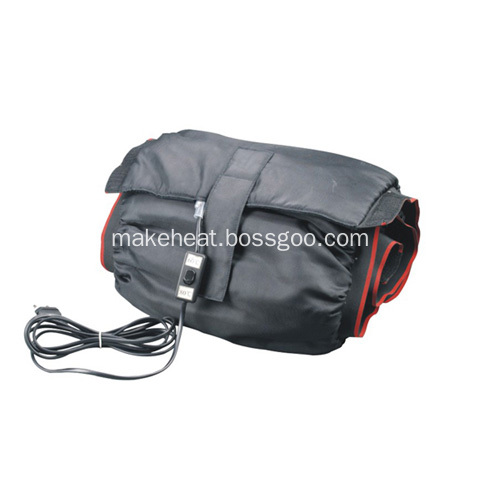Virus diseases of pepper, especially streak type virus disease, are very similar to the hazards of tea aphid. Many vegetable farmers couldn't distinguish clearly, resulting in improper use of drugs and delaying the best treatment period and causing a large area of ​​production reduction. The following describes the harm symptoms and prevention methods of virus diseases and tea saponins.
I. Viral disease
1. Symptoms: Common symptoms of pepper virus disease include mosaicism, malformation, and striae. Mosaic type: diseased leaves show dark green and light green leaves and shrunken. Deformity of the leaves: In the early stage, the leaf veins of the heart retreated from the veins and gradually turned into leaf shrinkage. Afterwards, the diseased leaves became thicker and the leaf margin curled up to form a bucket. Young leaves narrow or appear linear leaves. In the late stage, the upper part of the plant was obviously clustered, the internodes were shortened, the plants were dwarfed, and dark green and light green and white spotted flowers appeared in the severely diseased fruit, with verrucous protrusions. Stripe type: The main veins of the leaves are brown or black necrotic and gradually spread to the lateral branches. The main stems and growing points cause flowering, falling leaves, fruit drop, and the whole plant withered.
2. Incidence patterns: The main pathogens of pepper virus disease are cucumber mosaic virus and tobacco mosaic virus. Cucumber mosaic virus mainly lives on perennial weeds and protected vegetables, and is transmitted by roundworms in the second year. The tobacco mosaic virus is overwintering in soil, diseased bodies, seeds or cigarettes and is mainly transmitted through sap contact through agricultural operations in the field. Especially when it comes to high temperature and dry weather, it is conducive to breeding and transmission of locusts. In addition, weight loss, lack of water, lack of fertilizer, extensive management, small seedlings, and colonization may cause the epidemic.
3. Control methods: 1 Selection of resistant varieties, such as Zhongjiao No. 2, Jinjiao No. 3, Shenjiao No. 1 and No. 2, etc. 2 seed disinfection. Soaking with 10% sodium phosphate solution for 20 minutes, washing with water and soaking and germination. 3 cultivation management. The use of plastic film covering cultivation, so that early colonization, early results, enter the virus, the pepper has a robust plant, developed roots, increased disease resistance. Timely control of locusts. 4 chemical control. Spray 20% of virus A WP 500 times or 50% of bacterin 200 times, or ceftin Plus Harvest (one packet each, half the seedling period). The seedling stage or after spraying every 10 days after planting, continuous control of 3 to 4 times.
Second, the tea
1. Habits and dangers Symptoms: Exposed vegetables are the most affected in summer. The developmental optimum temperature is 16°C to 28°C. It takes only 4 to 5 days to complete one generation at a temperature of 28°C to 30°C, and 7 to 10 days at 18°C ​​to 20°C. Chengyu and young larvae gather in the young leaves of young leaves, tender stems, buds, young fruit and other parts of the pepper to suck juice, resulting in plant damage. The back of the victim's leaves is gray-brown or yellow-brown and has oil-like luster. The leaf edge curls to the back and forms a buckle. Damage to flower buds and young fruit does not bloom or deformed flowers. In severe cases, fruit can not be set (like the symptoms of streak virus disease). The fruit is affected. The surface of the fruit shank and stalks are grey to gray brown, loses luster, and is tumbled. When the damage is severe, the flowers fall, defoliate, and drop fruit, causing a large area of ​​reduced yield.
2. Control methods: It is found that the emergence of this wart should be immediately controlled by the chemical, available 15% fluorenone EC 3000 times, 34% locust ricin EC 2000 ~ 2500 times, 48% LST 1000 times, 10% In addition to 3000 times liquid, 1.8% abamectin 3000 times spray control. Diclocarbol is not to be used for the production of pollution-free vegetables for controlling aphids.
Features:
- Fast and effective heat up, even on cold days- Temperature set at 175 F
- Melt-Proof inner liner (with heat sensitive dye to show mis-use or mal-function)
- Operating Light- RED shows when heating and GREEN when full temp is reached
- Dupont Nomex/Kevlar Insulation to keep the heat in and set Hot Pressures- Heat the entire carcass deep down
- Built Tough - Codura Exterior & high impact temperature controllers, full coverage Heating Elements
- Built and serviced in house
- Includes a nylon carry bag
- Can be used with all compound race tires
- Sold in sets of two
Image as below:

Tire Warmer, Tyre Warmers, Numerical Control Tyre Warmer, Standard Tyre Warmer
Ningbo JustLive Electrical Appliance Co., Ltd , http://www.makeheat.net